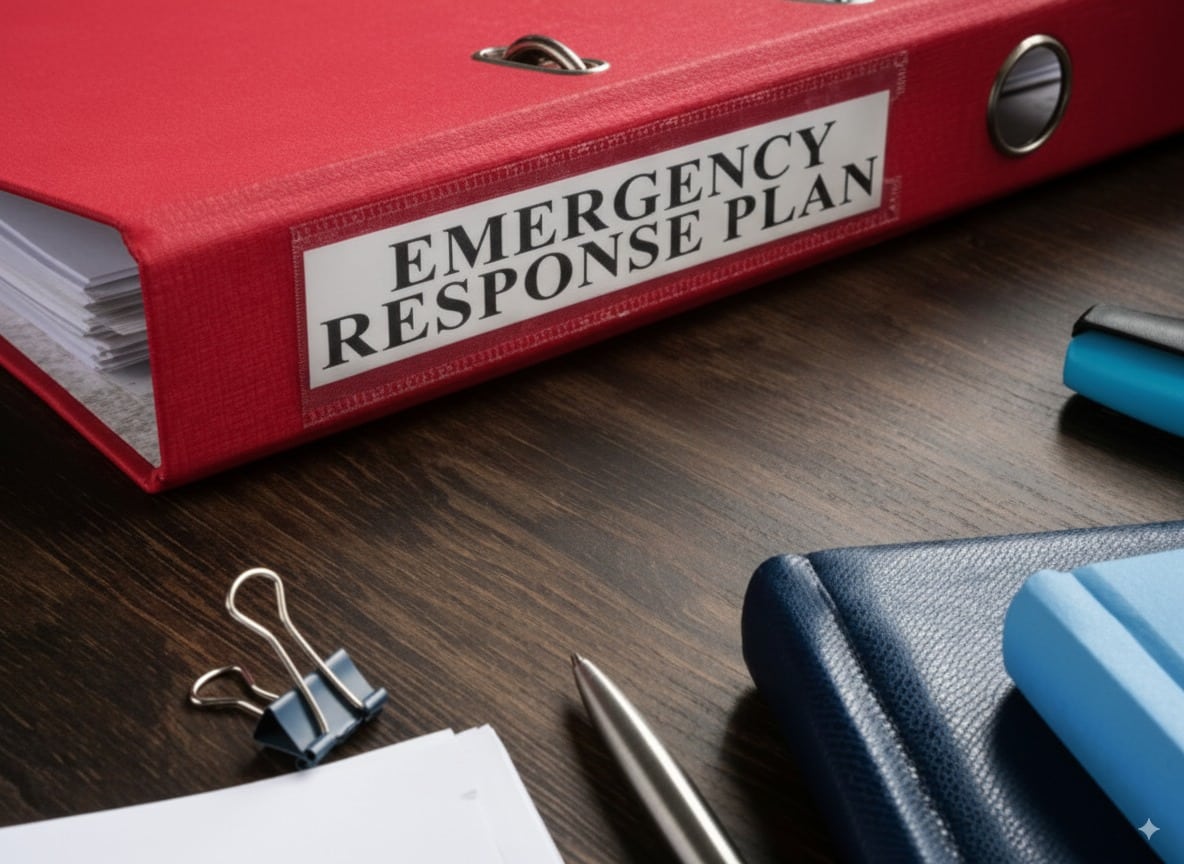September is recognized as National Emergency Preparedness Month, making it the perfect time for businesses to take a proactive look at their workplace safety measures. Emergencies—whether natural disasters, fires, medical incidents, or other unexpected crises—can happen at any time. While no organization can prevent every incident, being prepared significantly reduces risks, minimizes disruption, and most importantly, saves lives.
At the heart of preparation is safety training. A well-trained workforce that knows how to respond to emergencies can make all the difference in protecting people and operations. By investing time this month to review and strengthen your preparedness measures, you can ensure that your organization is better equipped to face whatever challenges may arise.
Here are five essential steps you can take during Emergency Preparedness Month to improve workplace safety and strengthen your emergency readiness.
1. Focus on Prevention
The best way to handle an emergency is to prevent it from happening in the first place. Begin by assessing your risks through regular safety audits and hazard assessments. Every workplace has unique vulnerabilities—whether it’s fire hazards in a warehouse, weather-related risks such as hurricanes or tornadoes, or potential chemical spills in a manufacturing facility.
Conducting an audit helps you identify these hazards and implement corrective actions before they escalate.
For example:
- Inspect fire extinguishers, sprinkler systems, and alarms to ensure they’re operational.
- Verify that emergency exits are clear and properly marked.
- Evaluate equipment maintenance schedules to reduce the risk of malfunctions.
Prevention also includes ensuring your workforce is trained in safe work practices. Ongoing safety training sessions should cover topics such as hazard recognition, safe equipment operation, and incident reporting procedures. A culture that emphasizes prevention empowers employees to take ownership of workplace safety every day—not just during emergencies.
2. Create an Emergency Action Plan
An Emergency Action Plan (EAP) is the backbone of workplace preparedness. This written plan outlines the steps employees must take in various emergency scenarios, ensuring that responses are organized and effective.
Your plan should include:
- Evacuation procedures with clearly designated routes and exits.
- Shelter-in-place guidelines for events such as severe weather or chemical exposure.
- Fire response steps including alarm activation, safe evacuation, and extinguisher use.
- Roles and responsibilities for trained staff members who assist others during evacuations.
However, even the best-written plan is ineffective without practice. That’s why safety training and regular drills are critical. Employees must not only be familiar with the plan but also rehearse it until their responses become automatic. Conduct fire drills, severe weather drills, and lockdown exercises to strengthen preparedness and identify areas for improvement. Be sure to have a fall rescue plan in place for employees who work at heights.
3. Strengthen Communication Strategies
In an emergency, confusion and panic can spread quickly. A clear and reliable communication strategy ensures everyone receives the right information at the right time.
Your strategy should include:
- A system for reporting emergencies to internal teams and external responders.
- Emergency contact lists that are regularly updated and accessible.
- Multiple methods of communication—such as email, text alerts, intercom announcements, or two-way radios—in case one system fails.
Employees should be trained on how to communicate during an emergency, including when to call 911, how to report incidents internally, and what information to provide. Clear communication saves time, reduces stress, and supports faster decision-making in critical moments.
4. Provide Safety Training in CPR and First Aid
Medical emergencies can occur at any time, from heat-related illnesses on construction sites to sudden cardiac arrest in an office. Having trained personnel on-site can mean the difference between life and death while waiting for professional responders to arrive.
Offering safety training in CPR and First Aid equips employees with practical skills to respond effectively in medical emergencies.
Consider:
- Training a group of employees in CPR and AED use to respond to cardiac incidents.
- Teaching staff how to handle common injuries, such as cuts, burns, sprains, and fractures.
- Providing guidance on responding to workplace-specific risks, such as chemical exposure or electrical shock.
Beyond emergency response, this training demonstrates your company’s commitment to employee well-being and fosters a culture of care. It reassures employees that their safety is a top priority and empowers them to look out for one another.
5. Review Insurance Coverage
While prevention and preparedness minimize risks, businesses must also be financially protected against potential losses. Reviewing your insurance coverage ensures that your organization can recover quickly in the event of an emergency.
During Emergency Preparedness Month, take time to review your policies:
- Confirm that you have adequate coverage for property damage, business interruption, and liability.
- Assess whether specialized coverage is necessary.
- Update policies to reflect changes in operations, equipment, or workforce size.
Insurance alone is not a substitute for preparedness, but it provides critical financial resilience that complements your overall safety strategy.
Why Safety Training Matters
Each of the steps above relies on effective safety training. Training ensures that employees not only hear about safety policies, but also understand, apply, and practice them. Without training, even the most detailed emergency plan can fail.
Safety training is also not a “one and done” task. It should be ongoing, interactive, and tailored to the specific needs of your workplace.
Taking Action This September
Emergency Preparedness Month is an opportunity to strengthen your organization’s resilience. By focusing on prevention, creating a comprehensive plan, improving communication, providing CPR and First Aid training, and reviewing insurance coverage, you build a safer, more prepared workplace.
If your organization needs guidance in developing or enhancing its safety training programs, Safety Consulting Specialists can help. With decades of experience conducting audits, delivering training, and building customized safety programs, we provide the expertise you need to manage risk and protect your workforce.
This September, take a moment to assess your preparedness. A small investment in safety training today can save lives and protect your business tomorrow.


